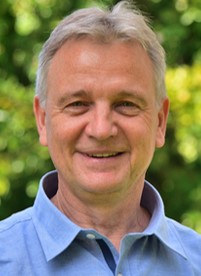Andre Anders
Director, Leibniz Institute of Surface Engineering
Leipzig, Germany
Professor of Applied Physics, Felix Bloch Institute
Leipzig, Germany
Editor-in-Chief, Journal of Applied Physics, AIP Publishing Melville, NY

Course Objectives
- Provide motivation for the use of plasmas in physical vapor deposition; structure zone diagrams
- Give an overview of different methods of physical vapor deposition, and their extensions by adding plasma processing
- Introduce plasmas and their basic properties
- Discuss principles of plasma generation by various forms of discharges, including direct current, pulsed, medium to radio frequency and microwave discharges; and laser-based plasmas
- Effects of magnetic fields on charged particle motion and plasmas transport
- Consider the effect of bias on the properties of deposited films
- Introduce condensable plasmas, especially those by arc and HiPIMS discharges, their operation, diagnostics, control, and scaling to commercially viable solutions
Course Description
The course starts with a motivation for using plasma in physical vapor deposition technologies by introducing and discussing various structure zone diagrams. The goal is to control the process so that films and coatings with desirable properties are produced.
Then we step back and look at the basics of plasmas: a brief introduction to basic plasma and sheath physics stresses the role of sheaths for plasma processing and diagnostics. Emphasis is put on plasma generators including sources of condensable (metal) plasmas. The operation of cathodic arcs will be contrasted with the processes of conventional magnetron sputtering. Those points are the foundation for understanding time-dependent processes in pulsed magnetrons and pulsed substrate bias situations. Especially interesting is the high power pulsed case, when significant ionization of the sputtered material occurs, leading to the technology of high power impulse magnetron sputtering (HiPIMS). The ionization of sputtered atoms is considered for various target materials, and the combined role of self-sputtering and gas recycling is discussed. Electron heating mechanisms include energy transfer from (“hot”) secondary electrons and ohmic heating in the magnetic presheath. Arcs and HiPIMS are technologies for cost-effective self-ion etching and self-ion-assisted film deposition on relatively large areas or batches of substrates. The issue of power-normalized deposition rate for HiPIMS is discussed including strategies to enhance this rate, making HiPIMS more competitive.
Who should attend?
Students, young and senior scientists, technicians and engineers who want to learn about plasmas in deposition processes
Course Materials
Lecture notes will be provided.
Date/Time: Sunday, April 26, 8:30 a.m.-4:30 p.m.
Cost: $500 Regular/$130 Student
